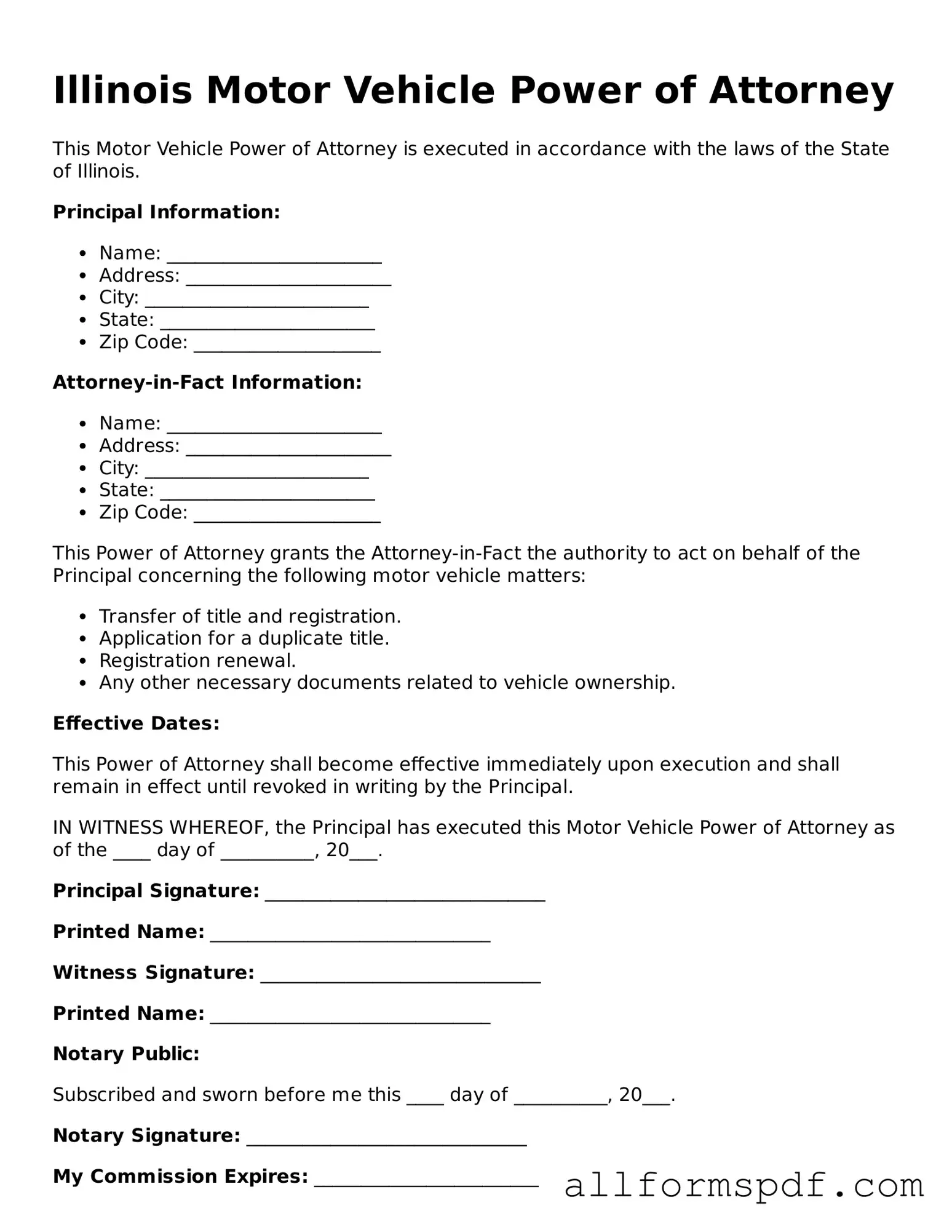Fillable Motor Vehicle Power of Attorney Form for Illinois
The Illinois Motor Vehicle Power of Attorney form is a legal document that allows an individual to appoint someone else to handle specific tasks related to their vehicle. This can include transferring ownership, registering a vehicle, or signing documents on behalf of the vehicle owner. By using this form, individuals ensure that their vehicle-related matters are managed smoothly and efficiently by a trusted representative.
Create My Motor Vehicle Power of Attorney Now
